In the field of aesthetics has also been heavily influenced by maintaining an elegant discretion, a taste of "quality car".
But you know: "Something is changing at Mercedes-Benz", and not only with the appearance of the compact range, but it is spreading to the rest of the firm's products, which seeks long-term regain leadership of the premium market.
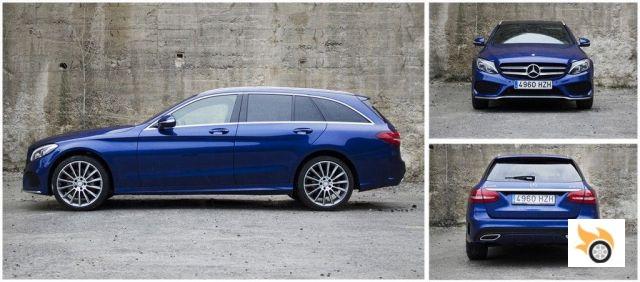
The changing tastes of the typical D-segment customer have forced Mercedes-Benz to offer more dynamic cars.
Dieter Zetsche's team has had to change the trajectory of its brand. And not on a whim, but out of necessity. We have already commented on these pages: conservatism and comfort are no longer in fashion, and now transgression and dynamism are in, even if this is sometimes misinterpreted.
Comfortable cars "do not sell", Citroën or Rover have suffered in their own flesh. Now you have to attack with a profile similar to that offered by Audi.
So, with that lesson well learned, the new C-Class premiered organic aesthetics, marked by artificial and decorative styling lines, huge air intakes on the front (especially in the unit that occupies us, with AMG kit), wheels ... And also changed the tuning of the car, to go down the road of comfort at all costs, and enter a somewhat more passionate way.
Design
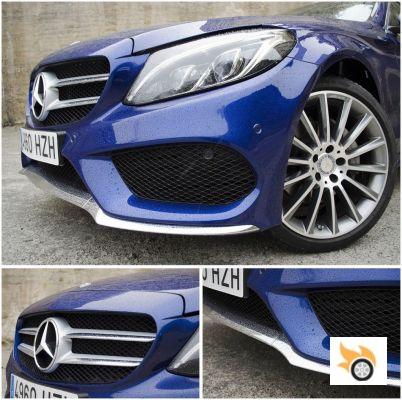
In the photo it has too many air intakes, in live I'll say that they even look good.
When we saw the new C-Class, it immediately reminded us of the new S-Class. And that's not necessarily a bad thing. The car clearly looks better live (even more so with this AMG equipment) than in photos. The front end, with the very upright grille, the elaborate LED headlights and the epic air intakes, looks better in person than in a snapshot, partly because you forget how fake those side air intakes are.
If you move to the front three-quarters, the short front overhang, the styling line that rises in the front wing, over the wheel, and the huge, perfectly framed wheel rim, give dynamism to the car, which has an elongated hood, and a rear that falls slightly downward.
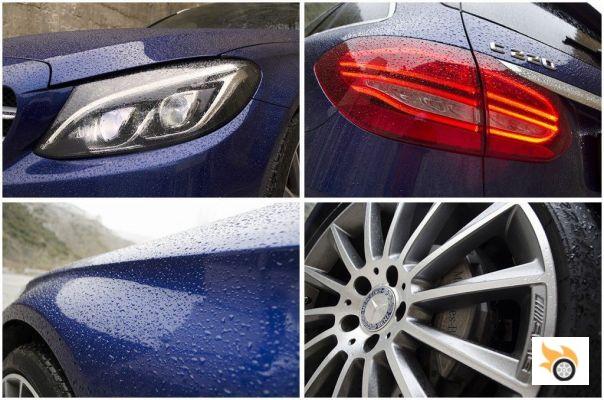
It is clear that an Audi A4 and even a 3 Series compensate better with their family bodies with the C-pillar, with a more sinewy design that lightens the visual weight of the rear of the car, but in the C-Class, in return, more cargo space is achieved.
The rear view is presided over by two false exhaust outlets (what a piece of cloth), and by some nice LED technology headlights. The electric tailgate (optional), gives a perfect touch of versatility to load and unload the shopping, the stroller, the bike or the dog.
Cabin
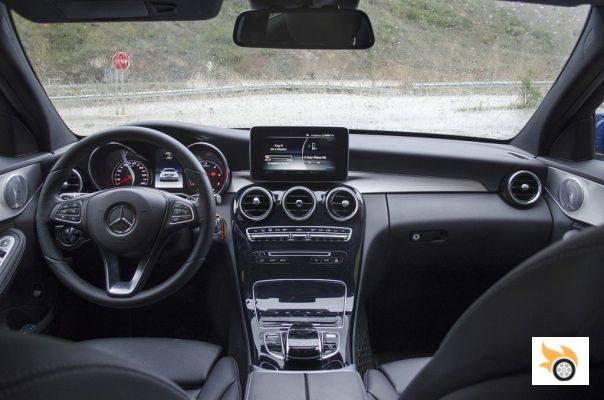
The interior design is bolder than its BMW or Audi rivals.
Opening the door reveals a reinterpretation of the Mercedes interior design, very inspired by the S-Class, and with certain touches of the compacts of the house. The "good" thing is that all the equipment is integrated into a sort of floating console (in piano black fingerprint-trap in the test car), which is much more visually compensated than what happens in an A-Class.
The whole dashboard design, very organic, emulates a living room, presided over by the Bang & Olufsen flat-screen TV (the infotainment system screen) above the climate control diffusers, with a design inspired by the turbines of an aircraft engine (although my wife said they were "holes with covers like thimbles"). The genuine aluminum dashboard and door appliqués, the touches of ambient lighting (which can be color-changed), the choice of materials and the fittings are... Mercedes-Benz.
That's why by execution and taste in design, we find it much more attractive than a BMW 3 Series, much more "Germanic" and practical. And it's not that the BMW has "bad quality", which it doesn't, but simply that Merecdes risks more in the forms and presentation, and achieves something that has a deeper "I don't know what".
Here there is also a more "Latin" touch than in an Audi, where the design, being more elaborate than in a BMW, is a bit Germanic.
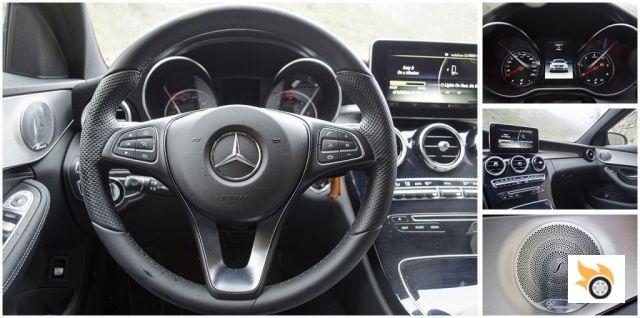
Beyond the design is the erognomy, which ultimately matters more. The infotainment system, which can be operated from a roulette or from a kind of touch-pad located on it, also has buttons scattered around the dashboard and around the device itself "command". The result is that to complete an action you have at least three ways to do it (button, roulette or touch-pad), which at first makes you a little crazy until you get the hang of it.
Once you get the hang of it, I'll say that I find the BMW or Audi system more intuitive, but the Mercedes-Benz system is much improved, and represents an alternative as good or better than its rivals.
The front seats are spacious enough for any size, and the seat and steering wheel adjustment will make you find your place quickly. The extendable bench for the calves and lumbar adjustments will take good care of you, although the size available between the petals of the backrest seems to me "American measure", for excess width.
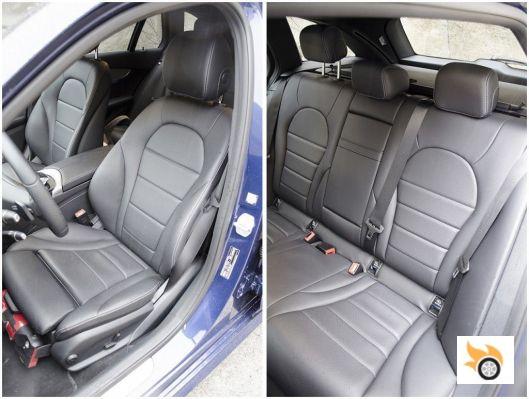
The steering wheel has behind it, like the Mercedes, a "single lever" for almost all the functions on the left (high beams, indicators, windscreen wipers...), while the lever on the right serves as a gearshift control, to engage D, N, P or R. Two small paddles are used to manually operate the gearshift. Two small paddles are used to manually operate the test car's optional 7G-Tronic gearbox.
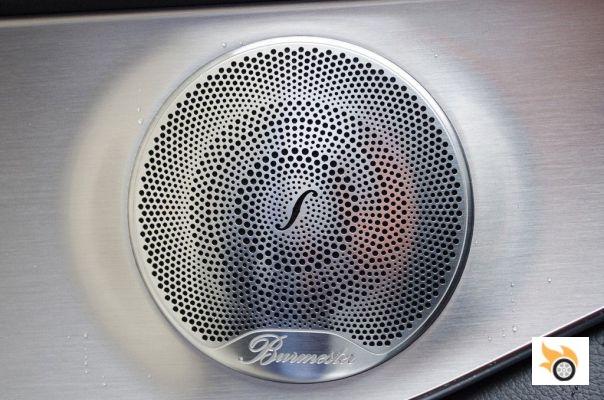
The optional Burmester audio system is a demonstration of how to achieve sound genius in the passenger compartment.
The rear seats, on the other hand, seem a bit more limited. For starters, the door doesn't open as much as in other rivals in the segment and the access space isn't huge (fitting an isofix car seat is a bit tricky). The space for legs, back and head (the Wagon roof helps in this, although the test car had a panoramic glass roof), is acceptable, in line with its two German rivals, although it is still for two adults, as the central seat, with the transmission tunnel, seems unbearable for long journeys.
The boot space is flush with the load space (there is a box underneath), and is usable. With the electric tailgate open, loading and unloading is child's play, helped by a curtain to cover the boot that folds back on its own when the boot is opened.
Rolling
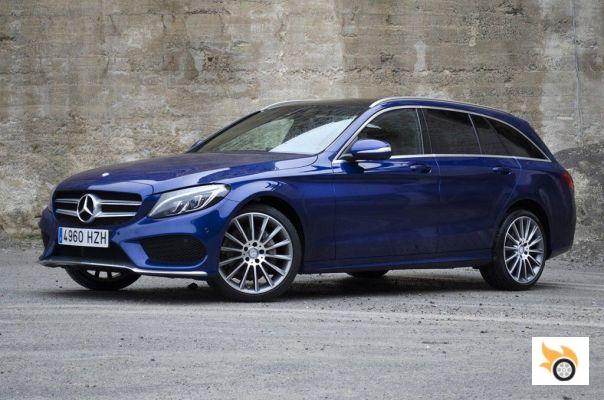
Having gone through everything in static mode, it's time to start, by turning the key (hey, no starter button). The 2.2-litre 170 hp diesel is greeted with a certain "tractor-like" rattle, which calms down when it warms up a bit. If we start to drive, the sound also disappears to a large extent.
Starting to drive in the city, the first surprise I got almost immediately. In the streets full of potholes, speed bumps and badly groomed manhole covers, the C220 Bluetec on test proved to be much drier than I remembered from the previous C-Class. What's more, it reminded me of an A4 S-Line in this respect. The use of wheels shod with oversized, low-profile, stiff tyres has something to do with this, as does the sporty suspension.
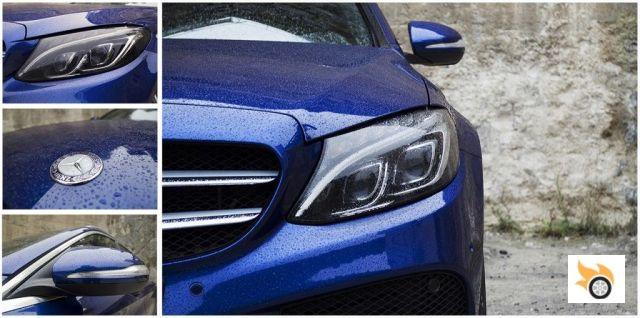
More surprisingly, these bumps were able to move the car out of its path at 30 mph around town, especially the rear. The use of 255 millimetre section wheels on a 170 horsepower car is difficult to understand, and brings with it these compromises, only explained by the aesthetic improvement achieved.
In the city, it uses little fuel and is smooth in gear changes and engine, but the suspension is dry.
For the rest, the C-Class is a car that manages with total competence in the city. Maneuvering with the rear view camera is easy. Only the rear-view mirrors hinder your visibility when entering roundabouts. For the rest, steering, sound insulation (very well cared for), and torque and gearbox response (whose ratio changes are not perceived in these conditions), generate a placid atmosphere, even in the worst of traffic jams. Optionally you can purchase the assisted driving system up to 60 km/h to free you from driving tasks in traffic jams, but the test car didn't have this system.
The 170 hp's fuel consumption is ridiculously low. Six litres and a bit are enough per 100 kilometres to quench your thirst in an urban environment, which is really low for the power and torque available.
If we go out on the open road to cover miles, we find again magnified these features that I have already mentioned above. On the one hand, the sound insulation is great: the engine can't be heard, and the wheels don't make too much presence with their rolling.
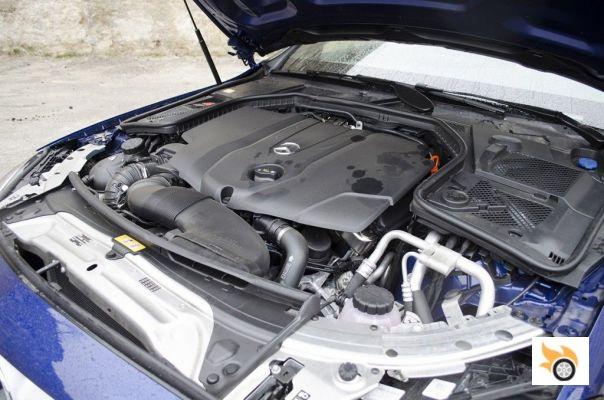
The problem is in the footwear and in the reactions to bumps. The car is dry again on the open road, and breaks down its line if we step on a pothole or irregularity. In addition, it seems to want to step on all the irregularities on the asphalt. In this sense, a 3 Series didn't seem to me so "disturbed" by the unevenness of the road surface.
The engine makes do with between 5.8 and six litres per 100 kilometres on this type of road. Combine this with a fuel tank of over sixty litres and you have an almost endless range of 800 kilometres between refuelling.
If you're driving at night, the LED headlights make daylight out of any track, but the automatic high beam system doesn't quite work as it should, and it's more effective to play with the hand control.
So what happens if we try to have a bit of fun with the C-Class? The car has gained some dynamism. The steering is precise, the brakes powerful, although the pedal travel and the pressure to be exerted are strange and are not modulable "to the consumer's taste". The gearbox, actuated with the paddle shifters, is not the best to enjoy a curvy track, and even with the driving mode selector in the sportiest format, has vices in automatic mode (it takes time to reduce, or puts a gear when you do not expect it).
It's more dynamic than before when cornering, but it gets out of place too much on broken tarmac.
The nose doesn't pitch under braking, the body doesn't sway too much, and the rear end can even yaw if you want it to (and with 255 wheels and snow falling, it's easily provoked, I tell you with involuntary experience).
But despite all this, the C-Class is not a car that's fun to drive fast. It's clearly more competent than previous instalments, but it doesn't let you feel the road. The steering doesn't talk to you, the brakes don't let you manage what you're doing, and the throttle isn't direct either.
So if you want to have fun, we're afraid that the 3 Series is still the preferred option, even if aesthetically this C is a "sporty canton".
Conclusions
This C-Class has caught my attention for all these reasons. Aesthetically, it's an ambitious car on the outside, and a bit radical for what the typical "merche" customer used to style until now. Inside, it's much more accomplished, and it's also more daring than its premium rivals.
Dynamically, especially with the finish and suspension of the tested unit, I think it has made a mistake in part: Yes, the car, on perfect asphalt, shows a sportier footprint, but it compromises comfort over bumps, and even going to the attack, is more conditioned, because it bounces on them and dislocates the trajectories. Sometimes it is more effective to go a hair lighter and less hard, and to be able to keep the wheels on the ground.
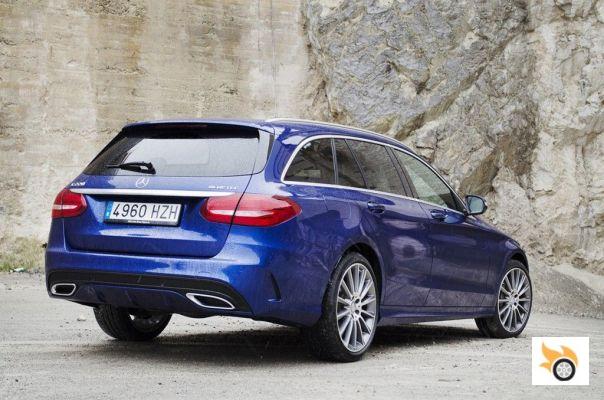
Mercedes has changed the philosophy of the C-Class: from a car with a superior, comfortable and comfortable ride to a more dynamic, but also drier car.
The C in this sense, with the AMG finish and its 255 rollers, is an aesthetic license for those who want to stand out and exclaim "sportiness" through the window, but who are not a "Nico Rosberg-like" driver.
The C estate isn't cheap. In fact, it's more expensive than its rivals, and the options that have to be added on top make it more complicated (things like adaptive cruise control, automatic gearbox...). But hey, it's a Mercedes, and you pay for that. It's also true that it holds its value better over the years than its rivals.
Would I buy it? I'd go for a 320d Touring from BMW first, but that's because I'm more about action than design. If I wasn't going to attack corners with it, I find the Mercedes more friendly and bold in its cabin.

























